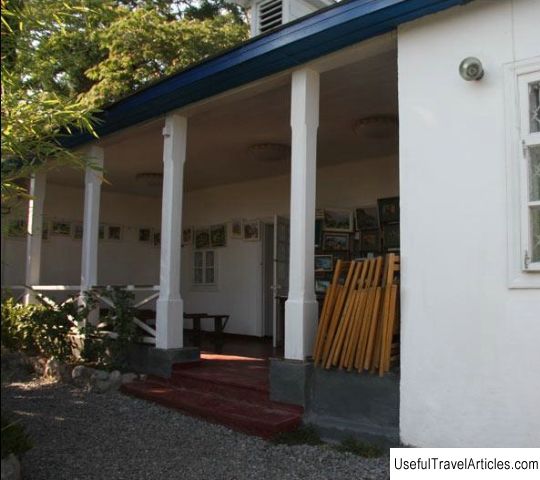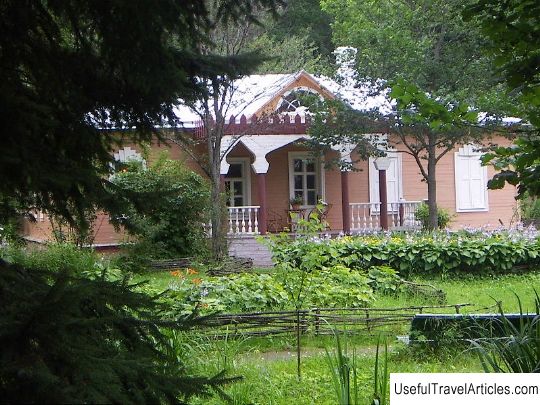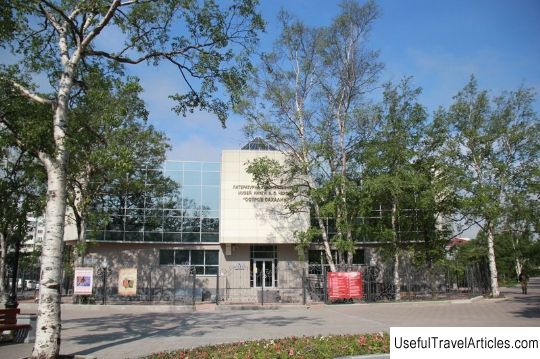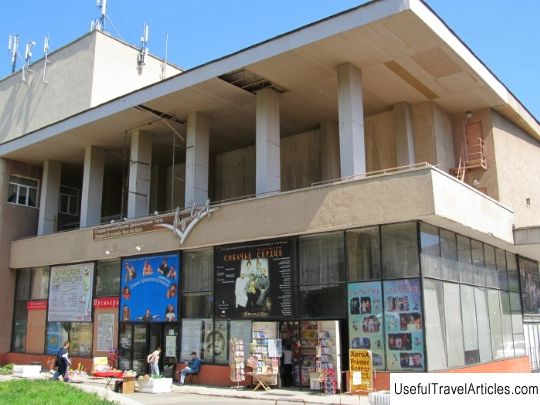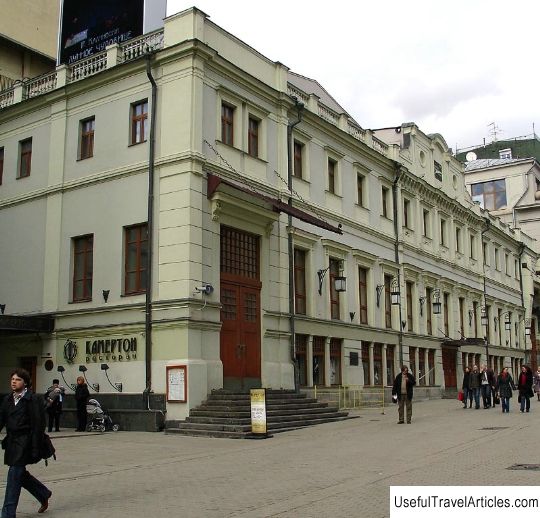House-Museum of Chekhov ”Belaya Dacha” description and photo - Crimea: Yalta
Rating: 9,4/10 (3054 votes) 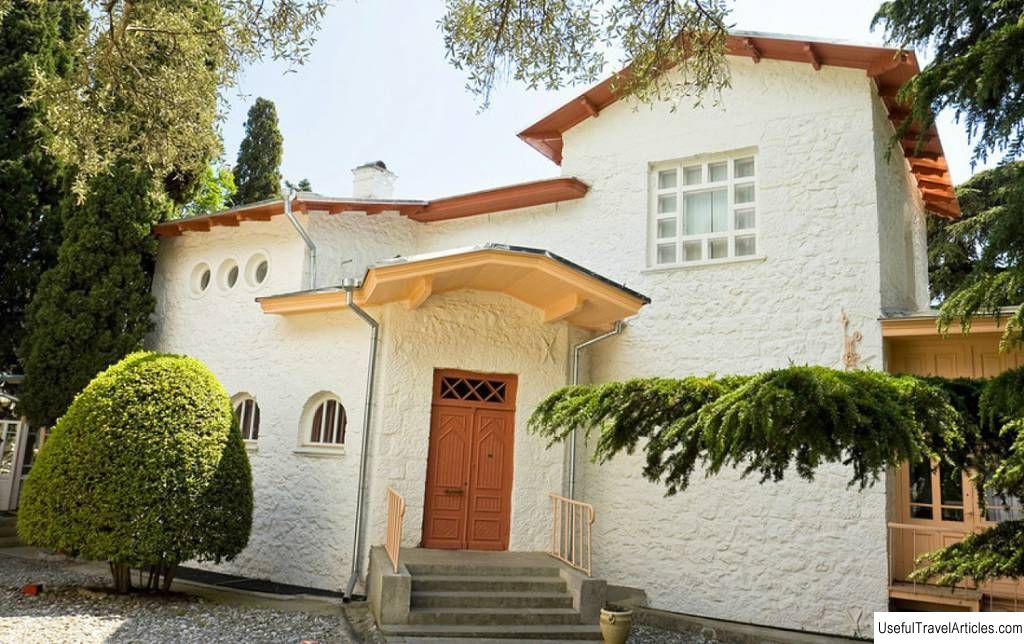
House-Museum of Chekhov "Belaya Dacha" description and photo - Crimea: Yalta. Detailed information about the attraction. Description, photos and a map showing the nearest significant objects. Photo and descriptionBelaya Dacha in Yalta is the place where the writer and playwright Anton Pavlovich Chekhov spent his last years. This house has remained almost untouched for more than a hundred years. Now there is a museum, where the writer's memorial rooms, personal belongings of him and his relatives, the garden that Chekhov laid out with his own hands and much more are preserved. Anton Pavlovich ChekhovA. P. Chekhov was born in Taganrog into a merchant family in 1860 . There he first visited the theater and fell ill with it forever. Then, while still in the gymnasium, he began to write short stories, notes, draw cartoons ... But his profession he chose not writing, and not theater, but medicine. In 1879 Chekhov entered Moscow University at the Faculty of Medicine. After graduation, Chekhov began working as a doctor in provincial hospitals - for example, in Zvenigorod. Since his student years, Chekhov has been publishing a lot of short humorous stories. He writes a lot, a feuilleton a day, and is published mainly in newspapers or small magazines. Most often it uses aliases . He has several dozen pseudonyms. Until now, not all of them are open. A doctor without patients, A man without a spleen, My brother's brother, Someone, Ulysses, Laertes - whatever he calls himself during these years! The most famous pseudonym is Antosha Chekhonte, by his gymnasium nickname. He writes not only stories, but dramatic scenes and vaudeville, collaborates with theaters. The very first play - "Fatherlessness" - he wrote in his school years. But gradually his work becomes more serious. He begins to write a novel, but gives up and takes a long trip to Sakhalin Island. For material, for experience, for the truth of life. As a result of the trip, the book "Sakhalin Island" was formed - Chekhov wrote it several years after the trip. Gradually, it is literary work that becomes the main one. Chekhov no longer practices as a doctor, but writes stories, novels and collaborates with theaters. Readers' recognition came to him long ago, but he has to fight for the audience's recognition. His most famous play, The Seagull , was written in 1896. At the premiere at the Alexandrinsky Theater, she failed miserably. Chekhov gets an exacerbation of tuberculosis and wants to give up theater altogether. But a miracle comes. The life of a playwright is forever associated with Moscow Art Theater , founded by two friends - K. Stanislavsky and V. Nemirovich-Danchenko. It was the performances of Chekhov's plays that brought fame to the theater. The young theater wants to start its second season with the production of The Seagull. Stanislavsky and Nemirovich-Danchenko are sure that they know how to stage this play so that the audience would sit with bated breath. Disappointed in himself and in the theater, Chekhov has to be persuaded for a long time. Still, he agrees, and at rehearsals a second miracle happens to him. He meets the actress Olga Knipper - she plays Arkadina in The Seagull. They start a romance. The Seagull in the new production, unlike the previous one, is wildly successful. But Chekhov himself cannot attend the premiere - he is seriously ill and lives in Yalta undergoing treatment. Chekhov in Crimea In the late 1890s. his health deteriorates and he goes to Crimea for treatment. The writer is sick with tuberculosis , the disease intensifies after a trip to Sakhalin, and even more after the failure of the first production of "The Seagull", and in general Chekhov does not spare himself. Doctors insist on moving to a milder climate. In 1898 Chekhov buys a plot of land near Yalta and builds a house here , in which he spends the last years of his life. Already next fall, he moved here with his sister and mother. The architect of the house was L. N. Shapovalov . He left memories of this: the young man was very afraid of responsibility and was not sure that he could build a good home for a great writer, whom he treated with great respect. The house turned out to be small, but elegant and very comfortable for life. Chekhov took care of the garden around him and planted trees himself. L. Shapovalov has always remained a friend of the Chekhov family and many times visited the house he designed. Housewarming was officially celebrated on September 9, 1899 .. In 1900, the Moscow Art Theater went on tour to the Crimea. Olga Knipper has been living with Chekhov for several months. In Yalta, he gathers not only actors and directors of the Art Theater, but also writers and musicians: M. Gorky, F. Chaliapin, S. Rachmaninov, I. Bunin . During these years, he met the young V. Meyerhold . Meyerhold plays in Treplev's The Seagull. Chekhov discusses his creative plans with them and begins work on new plays. He buys a small dacha in Gurzuf and settles there to work on the play Three Sisters. In the spring of 1901, the official wedding of Chekhov and Olga Knipper takes place. The couple loved each other very much, but lived most of the time apart: he was in the Crimea, she was in Moscow. Chekhov did not want his wife to leave the theater and the work of her life for him. After Chekhov's death, she gets the Gurzuf dacha. Now there is a museum dedicated to the spouses. Chekhov lives in Yalta until the spring of 1904. In the summer of 1904, Chekhov went to Germany to treat an exacerbation - and there he died in the arms of Olga Knipper. She outlived her husband by 55 years and died in Moscow in 1959. Chekhov MuseumChekhov bequeathed the house and all proceeds from the publication of his works to his beloved sister Maria Pavlovna . She maintains the house with these funds and keeps the furnishings of Chekhov's rooms and the archive intact. The house was damaged in an earthquake in 1927, but was restored a year later. Maria Pavlovna managed to preserve the house and archives during the occupation. In the summer of 1944, she was awarded the Order of the Red Banner of Labor for this. In 1966, another building was built here, and in the 70-80s. the museum was closed for restoration. The modern exposition was opened in 1983 . The building was built in Art Nouveau style . It is distinguished by its grace and comfort. There are no identical rooms and identical facades here: the dacha was built taking into account the individual characteristics of each of the three residents - Chekhov himself, his sister and his mother. Now only three rooms have completely retained their former appearance. This is the writer's living room, bedroom and study. The office is divided into different zones with individual lighting, it gives an impression of comfort and tranquility. Part of the furniture for him Chekhov grabbed from his beloved Moscow Region Melekhov , and he ordered some on purpose. The owner cared not so much about the unity of style as about his own convenience, so the furniture here is diverse. We did some things according to our own sketches. In the bedroom there is an armchair, which was made according to the sketch of Chekhov himself (the second one was made for another famous theater-goer - V. Gilyarovsky , it is now in his museum in Moscow). The dressing table in the bedroom was created from the drawings of his sister. According to her sketch, the sideboard in the dining room was made, she also embroidered the tablecloth. The cabinet is decorated, in addition to photographs of relatives and friends of the writer, the works of his friend, the artist I. Levitan . They met in Moscow during their student years, they were very friendly. I. Levitan preferred landscapes and made portraits of only the closest people. A portrait of the young Chekhov by his brush has been preserved. In a niche near the fireplace in Chekhov's study is one of Levitan's last landscapes, a copy of the painting "Haystacks" - he painted it in his last winter, when he was visiting the Chekhovs in Yalta. In the dining room the clock hangs, which forever froze at the time of A.P. Chekhov's death. The museum houses the Chekhov family archive , dating back to the first half of the 19th century, a huge library containing books with Chekhov's notes and autographs. There are personal items of memorial significance - for example, O. Knipper's dresses, A. Chekhov's own stamp collection. Chekhov's garden is of particular interest. Initially, when the participant was just purchased, there were several old fruit trees and the remains of a vineyard. Chekhov himself is engaged in planning, enthusiastically orders seeds and seedlings. The soil is rather poor and there are no natural sources of water, but this does not bother the writer. His main love is roses . He writes here more than fifty varieties of roses. Plants many succulent plants that do not require watering: these are yuccas, agaves, dracaena. Chekhov was one of the first to bring pampas grass to Crimea, an ornamental South American cereal that can reach three to four meters in height. I tried to grow a birch near Moscow, but the birch did not take root. Now the birch tree still grows in the garden - it was planted by the centenary of the great playwright. From Chekhov's orchard, one pear has survived to this day, the rest of the fruit trees have aged and have been replaced. The entire garden is now considered a memorial. Trees planted by A.P. Chekhov himself, or trees of the same species in the same places, replacing old ones, have survived in the garden. The garden was badly damaged during the war; in Soviet times it was abandoned for a long time. It was restored for the 100th anniversary of Chekhov by specialists from the Nikitsky Botanical Garden. Now the garden has grown and requires quite complex maintenance: Chekhov planted trees too often and now they do not have enough space, they require additional fertilization, there is too much shade - and therefore sun-loving species do not grow here. But the garden remains a garden: it is cozy, cool and very beautiful. memorial benches , for example, "M. Gorky's Bench", are preserved in the garden. A bust of the writer has now been erected in front of the dacha. Interesting factsThe very first Chekhov play, Fatherlessness, was found in drafts only many years after his death. Part of this text was included in the script of the famous film by N. Mikhalkov "An Unfinished Piece for a Mechanical Piano." Chekhov is one of the most screened authors. Only Shakespeare and Dickens are ahead of him. Notes
          We also recommend reading Benedictine monastery (Kloster Engelberg) description and photos - Switzerland: Engelberg Topic: House-Museum of Chekhov ”Belaya Dacha” description and photo - Crimea: Yalta. |
